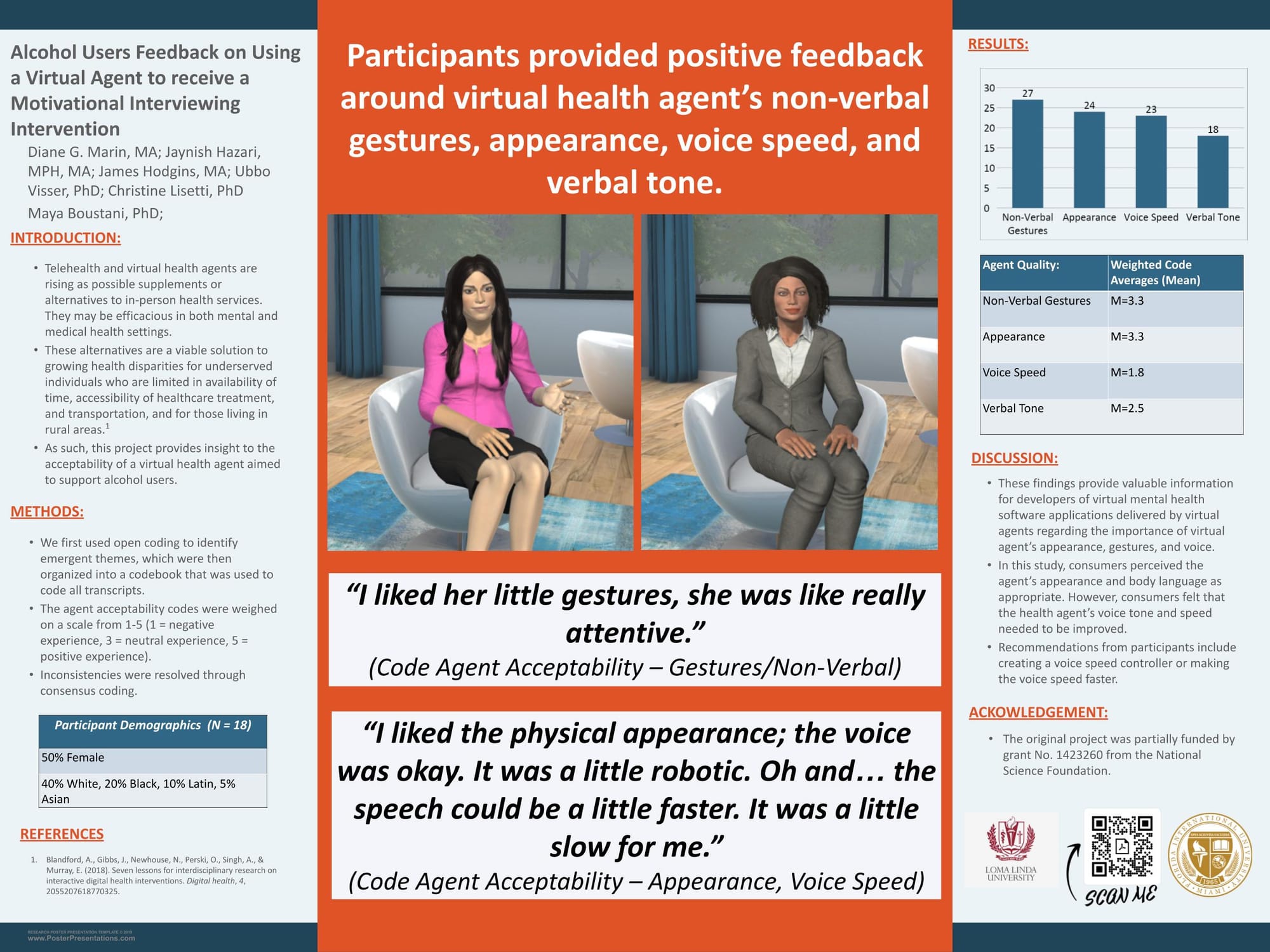Virtual Health Agents on Engaging Alcohol Users through a Motivational Interviewing Intervention: Agent Acceptability

Introduction. Telehealth and virtual health agents are rising as a supplemental to or possible alternative to in-person health services. They can be efficacious in both mental and medical health settings. These alternatives are a possible solution to growing health disparities for underserved individuals who are limited in availability and transportation. As such, this project provides insight to the acceptability of a virtual health agent aimed to support alcohol consumers.Methods. Individual semi-structured interviews were conducted with eighteen alcohol consumers (Male = 50%). Participants were White (50%), African American (20%), Latinx/Hispanic (10%), Asian (5%), and Other (5%). The principal investigators reviewed the transcripts and used open coding to create codes. A graduate student used the codes to create a codebook based on common themes. Next, two graduate students used the codebook to code the transcripts’ excerpts. The agent acceptability codes were weighed on a scale from 1-5 (1 = negative experience, 3 = neutral experience, 5 = positive experience). Finally, all five met to solve inconsistencies through consensus coding. Results. Qualitative data analysis revealed that four of the greatest impressions on the participants were the virtual health agent’s non-verbal gestures (n = 27), appearance (n = 24), voice speed (n = 23), and verbal tone (n = 18). Data analyses using weighted averages of codes revealed that participants rated the virtual health agent’s non-verbal gestures (M = 3.3). and appearance (M = 3.3) close to a neutral experience leaning more towards positive. This is important because it reveals that the health agent’s initial impression is not eliciting responses on the extremes (too beautiful / too unappealing). The weighted averages of codes also revealed that participants rated the agent’s voice speed (M = 1.8) and verbal tone (M = 2.5) negatively. Sixty-seven percent of participants reported that the health agent speed was too slow, and that tone was monotone and repetitive.Discussion. These findings inform developers of virtual mental health programs regarding the importance of virtual agent appearance and voice speed. They also highlight that the current health agent’s perceived appearance and body language are appropriate. Whereas the health agent’s voice tone and speed need improvement. Recommendations for the program developers of eEva are to adjust the speed of the health agent’s voice to be faster or provide options for voice speed and to reduce the repetitions in the health agent’s simple responses (i.e. ‘okay’).



